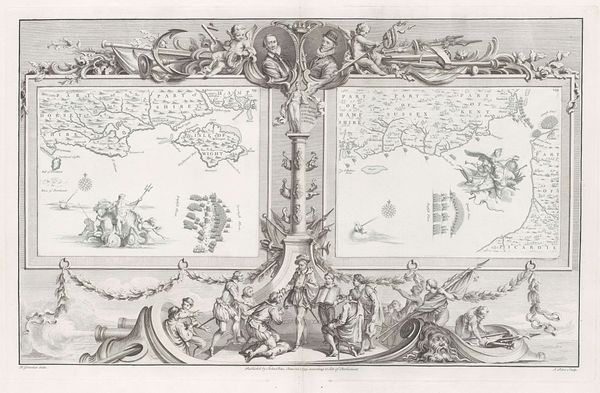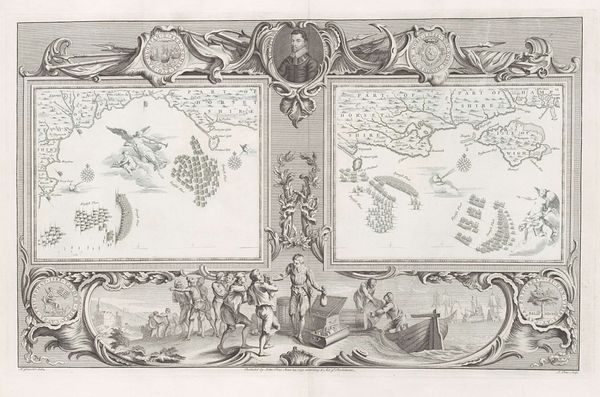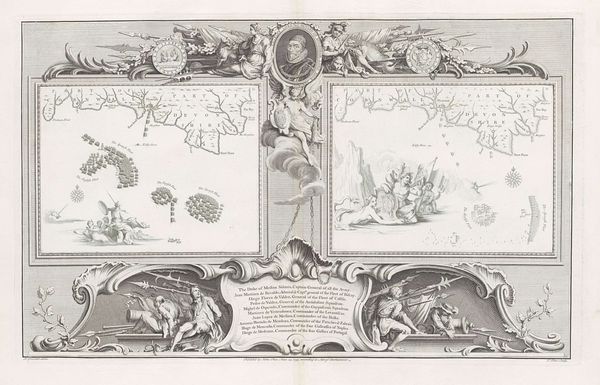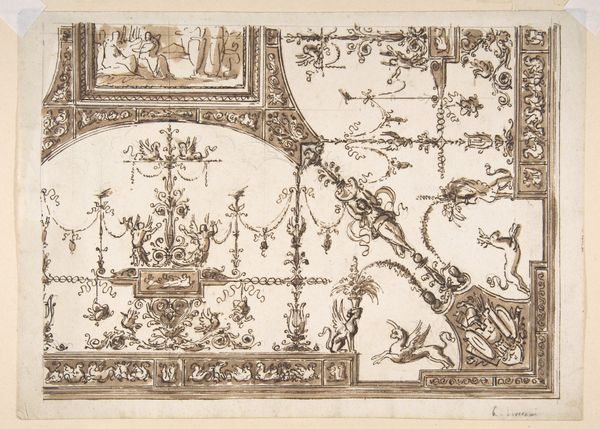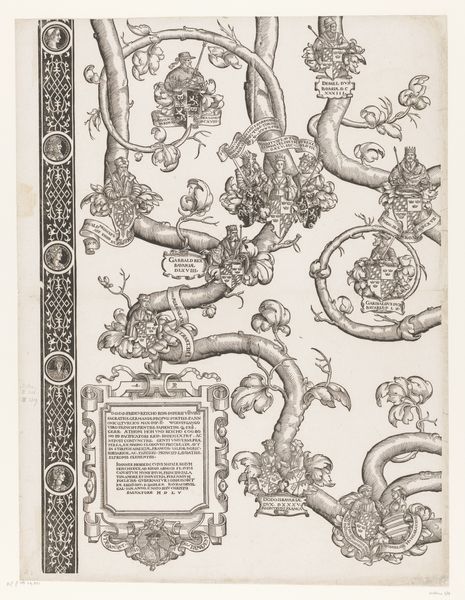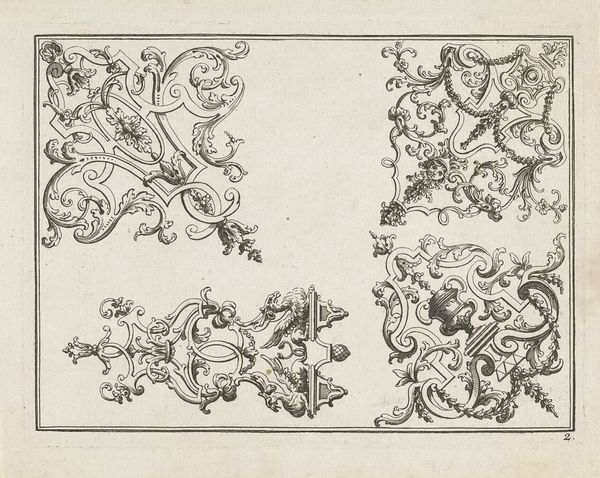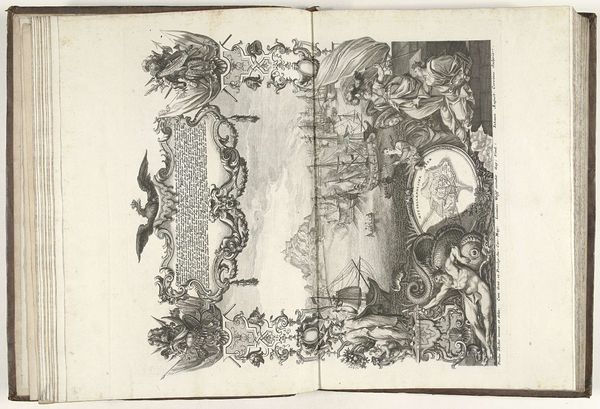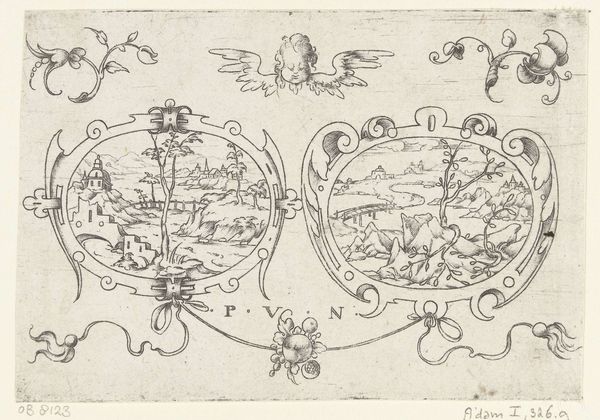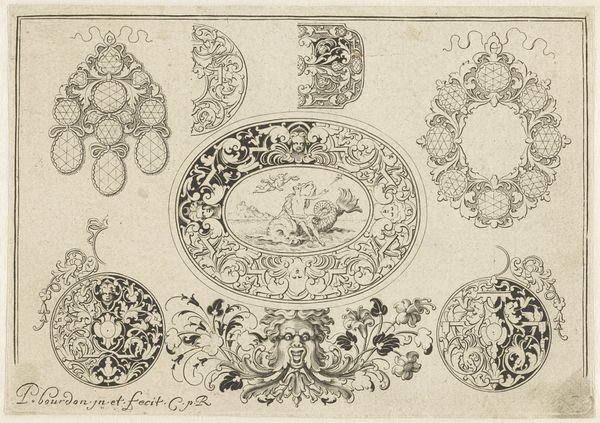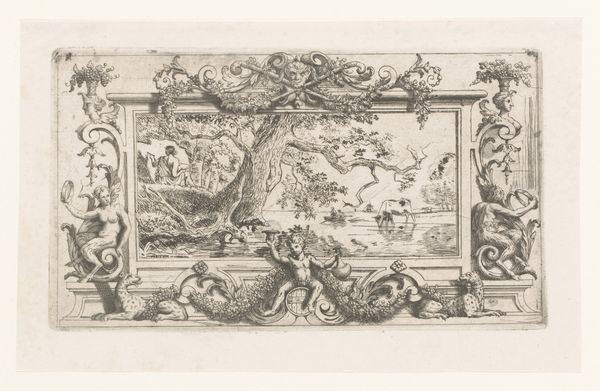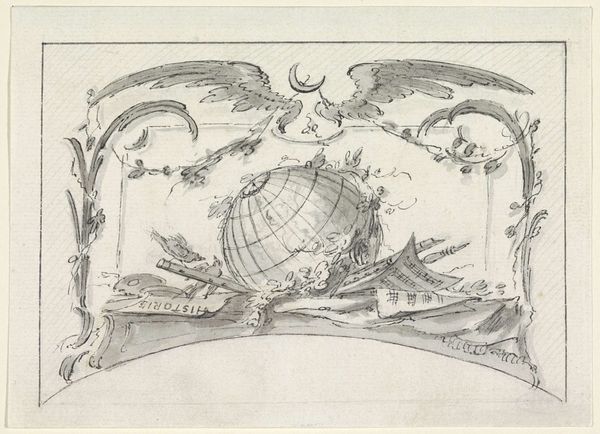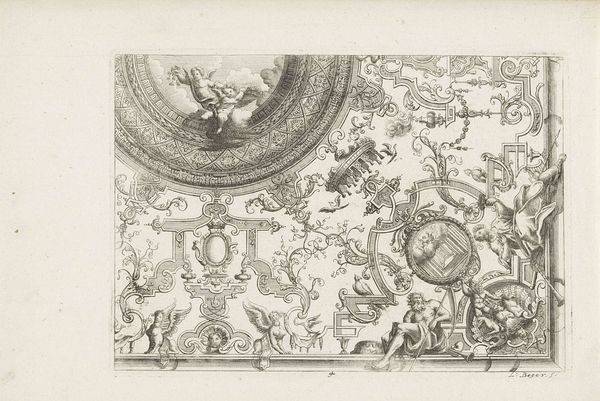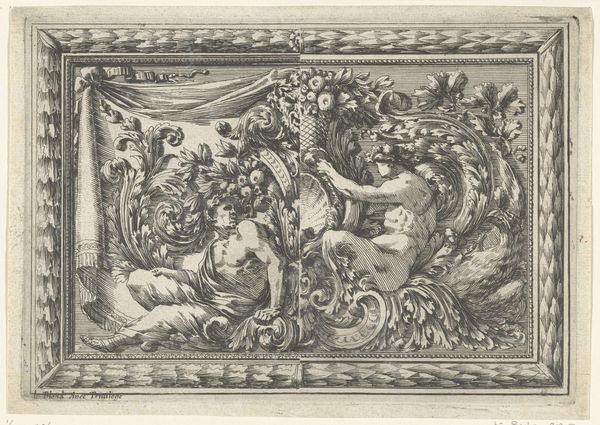
graphic-art, print, engraving
#
graphic-art
#
baroque
# print
#
pen sketch
#
landscape
#
line
#
history-painting
#
engraving
Dimensions: height 179 mm, width 233 mm, height 180 mm, width 234 mm, height 393 mm, width 620 mm
Copyright: Rijks Museum: Open Domain
Editor: This engraving, titled "Kaarten van de Spaanse Armada (28 en 31 juli 1588)," possibly from 1739, is attributed to John Pine. The intricate lines depicting the naval battle create an impression of strategic complexity, yet also a sense of restrained drama. How do you interpret this work through a contemporary lens? Curator: Well, first, it’s important to note the presumed date; situating the engraving nearly two centuries after the depicted events surrounding the Spanish Armada invites considerations about national memory and myth-making. How does the act of re-presenting history function within specific political contexts? Editor: That’s interesting. I hadn’t thought about it that way. What was the prevailing political sentiment around that time? Curator: Considering England’s ongoing project of empire in the 18th century, a visual document celebrating a historic victory over a major European power—Spain—functions as a reinforcement of national identity. Think about the embellishments: the cherubs, portraits, and textual details surrounding the maps. They serve to glorify English naval power but also advance a particular narrative. Editor: A narrative… How so? Curator: It downplays, doesn’t it, the complexities and costs of war? It’s a heroic, even romanticized, vision. Whose stories are omitted or glossed over in favor of this simplified narrative of triumph? For instance, where are the accounts of ordinary sailors or the lived experiences of communities affected by the conflict? How might this portrayal contribute to justifying further colonial expansion? Editor: That really reframes how I see this print! I was focused on the aesthetic details, but I now realize the importance of considering the context surrounding its creation and reception. Curator: Exactly. Examining those erasures can often be as illuminating as what is overtly displayed. It’s a useful reminder that historical artworks always exist in dialogue with the present.
Comments
No comments
Be the first to comment and join the conversation on the ultimate creative platform.
